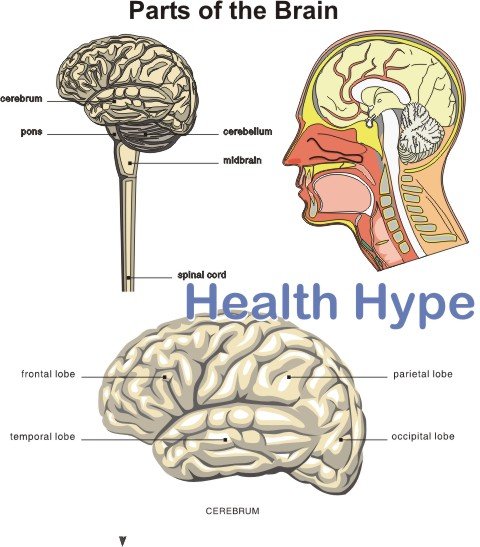Brain Abscess Location, Causes and Symptoms
An abscess may originate in multiple sites within the cranial cavity and therefore the term intracranial abscess more accurately describes it. Since the largest part of the brain, the cerebrum, is more commonly affected the term brain abscess is synonymous with cerebral abscess. An abscess may also occur in the cerebellum (cerebellar abscess) or brainstem (brainstem abscess). Another condition known as an empyema is also an accumulation of pus but this is within a naturally occurring cavity or space and in terms of the cranial cavity, it is more commonly known as pus around the brain. Both an abscess and empyema are broadly categorized under the term intracranial abscess.
What is a brain abscess?
A brain abscess is a localized collection of pus within the brain tissue (parenchyma). This is a consequence of pathogenic microorganisms, mainly bacteria, entering the normally sterile cranial cavity and lodging with the cerebral parenchyma. The pus contains immune cells, dead microbes, cellular debris, and tissue fluid. It is walled off by fibrous tissue which contains the infection. The infection causes inflammation of the brain tissue (encephalitis) with swelling of the brain which increases the intracranial pressure. The abscess is a mass that occupies space within the cranial cavity further raining the pressure in the brain. This in turn disrupts brain functioning and gives rise to symptoms similar to raised intracranial pressure and encephalitis (brain inflammation).
Causes of a Brain Abscess
Most brain abscesses are caused by bacteria entering the cranial cavity. Less common causes include fungi and protozoa, usually seen in immunocompromised patients like in HIV-positive patients, and parasites like helminths (parasitic worms). The most common bacteria include Staphylococcus aureus, aerobic and anerobic streptococci, Enterobacteriaceae and Pseudomonas species.
These pathogens enter the cranial cavity through multiple routes :
- Direct infiltration from neighboring sites like the paranasal sinuses, middle ear and teeth.
- Impregnation into the brain tissue in a penetrating head injury.
- Hematogenous spread (via the bloodstream) from distant sites and in septicemia.
Locations of Brain Abscess and Sources
An infection in the following areas may lead to an intracranial abscess in specific sites within the cranial cavity.
- Paranasal sinuses – abscess in the frontal lobe of the cerebrum
- Middle ear – abscess in the temporal lobe of the cerebrum and cerebellum
- Mastoid – abscess in the cerebellum
- Sphenoid sinus – abscess in the cerebellum
- Teeth – frontal lobe of the cerebrum
- Penetrating head injury – cerebrum, cerebellum or brainstem
- Distant sites (heart valve infection, lung infection) – multiple sites in the cranial cavity.
Signs and Symptoms of a Brain Abscess
Due to the disease process, a brain abscess presents with signs and symptoms of both raised intracranial pressure and encephalitis. Non-specific symptoms of a brain abscess includes :
- Fever
- Headache
- Nausea and vomiting
More specific features that should raise the concern about brain involvement includes :
- Papilledema
- Confusion and inability to think quickly and solve problems
- Drowsiness, stupor or coma
- Muscle weakness, often one-sided, and impaired coordination
- Diminished or abnormal sensations
- Seizures






